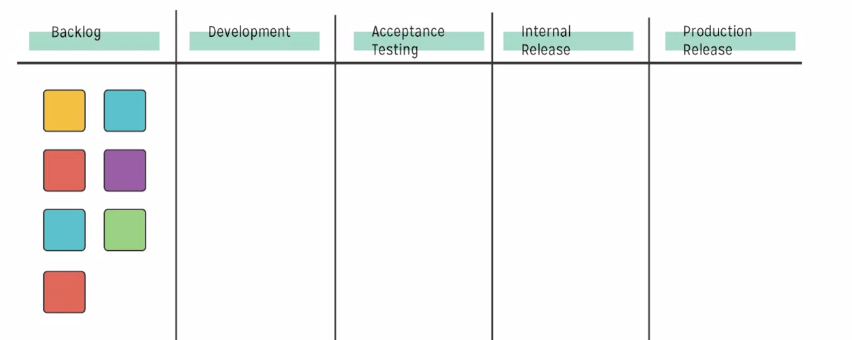Kanban is a methodology that was developed alongside lean manufacturing. It was originally designed to be used with lean manufacturing, but it can also be used independently of lean.
So what is Kanban?
Kanban is a project management system invented by Taiichi Ohno, an industrial engineer at Toyota. Kanban involves a technique to organize and track project progress visually, which is widely used even outside Agile or Lean software development.
Kanban is considered an agile methodology that accounts each component to be tracked for, and the process notifies each phase of its status. With this, it is easier to identify when to create new component. In lean manufacturing, this is called Just-In-Time manufacturing.
When a component is used, the process that replaces the component is notified so that a new one can be created. Basically, when a bin is emptied, a new component is created and placed into the bin as soon as possible. This strategy of continually using and refreshing items in bins on the factory floor is called the pull method.
In software development, this process is visualized using a task board, with each software development activity represented as a column on the task board.

Screenshot from the video Kanban, part of the Coursera Course
Software Processes and Agile Practices
In Kanban, all of these phases are coordinated. If a piece of work is done in one column, it’s ready to be pulled by the next column. However, an opening must form in that next column to allow the piece of work to be pulled into that phase, continuing the cycle.
Work In Progress – the amount of work currently in development in each phase
Bottlenecks – the slower parts of the process. A bottleneck occurs when one phase cannot keep up with the work created by the preceding phase
Two ways to address a bottleneck:
- Ramping up production at the bottleneck
- by adding resources to speed up production
- Decrease production ahead of the bottleneck
- by moving resources from one phase to another. Examples are multi-functional developers who may be in the development phase, moved to acceptance testing phase so the bottleneck in acceptance testing phase will be addressed.
Work in Progress Limits – this is limiting the amount of work that must wait to be pulled into the next phase.
Cycle Time – this is the total time that it takes for one piece of work to go through one full cycle of doing the work. This is the metric software product managers check to know if a change in the bottleneck has made any difference.
To measure cycle time in each phase, it is important to know when a piece of work is started and when it’s finished. Then, calculating the number of hours between these timestamps and we get the cycle time.
Cycle time is important because it’s a measure of what the process can handle and the quality of practices rather than a measure of the development team’s effort. A software product manager knows something is right when the cycle time is decreasing and the product quality is remaining constant or improving.
So, in summary, Kanban is a set of practices that allows the team to track their progress over time through the Kanban board, and ensures that the Just-In-Time development strategy is followed. In turn, waste is reduces and decisions are made as late as possible.
An effectively managed Kanban board will give a software product manager a clear picture of your project status at a glance. It can also help with improving efficiency, productivity, and collaboration.
References:
University of Alberta (2020). Software Processes and Agile Practices. [Coursera Course] under the Software Product Management Specialization. Taken November 2020.
Poelette, B. (2020). Kanban [Video]. Embedded under the course study videos under the Week 3 of the Software Processes and Agile Practices Coursera Course. Taken November 25, 2020.
Can I simply say what a relief to uncover someone who really understands what they are talking about on the internet. You actually know how to bring a problem to light and make it important. A lot more people should read this and understand this side of your story. I was surprised that you aren’t more popular because you most certainly possess the gift.
Thank you for the kind words, Willard! 🙂
It’s a pity you don’t have a donate button! I’d definitely donate to this excellent blog! I guess for now i’ll settle for bookmarking and adding your RSS feed to my Google account. I look forward to brand new updates and will talk about this website with my Facebook group. Chat soon!
I am glad to be one of many visitants on this great site (:, appreciate it for posting.
thanks so much for the appreciation!
I wish to show thanks to this writer for bailing me out of such a incident. After surfing through the world wide web and getting things which are not productive, I assumed my life was gone. Existing without the strategies to the difficulties you have resolved by means of your good guideline is a critical case, and the ones which could have badly affected my entire career if I had not discovered your blog. Your own talents and kindness in playing with the whole thing was vital. I’m not sure what I would have done if I hadn’t encountered such a thing like this. It’s possible to at this point look forward to my future. Thanks very much for this reliable and result oriented guide. I won’t hesitate to suggest your blog to anybody who should have support on this topic.
Thanks!